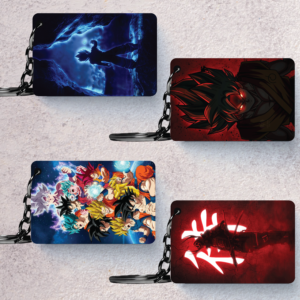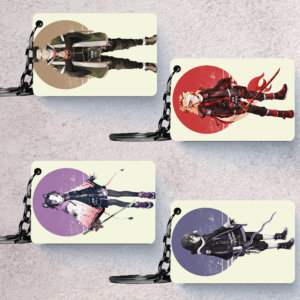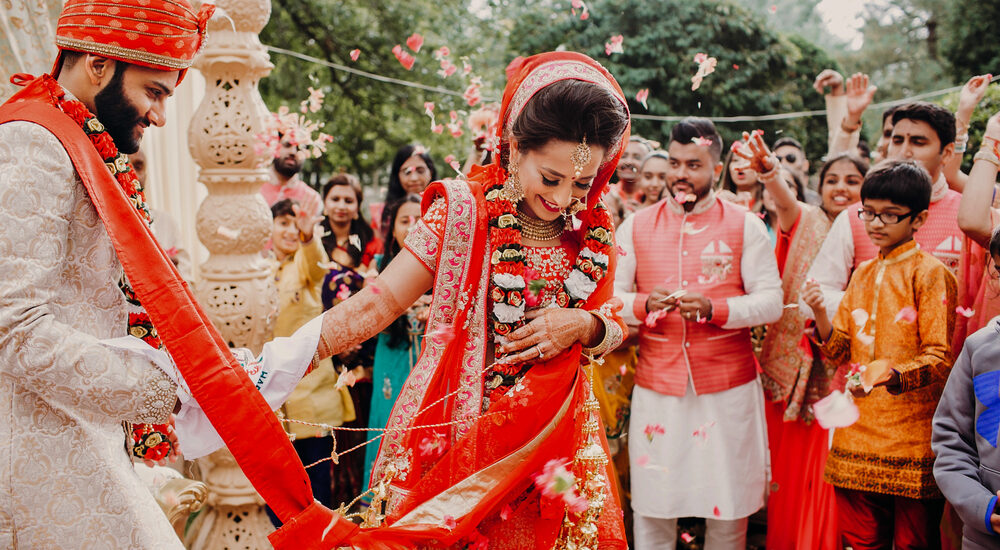Indian weddings are renowned for their vibrant colors, elaborate ceremonies, and rich traditions that vary across the diverse landscape of the country. While many people are familiar with the grandeur of events like the Mehendi (henna) ceremony, the Sangeet (musical night), and the lavish wedding day itself, there are numerous lesser-known customs that add unique cultural significance to these celebrations. These traditions, often rooted in centuries-old practices and regional folklore, reflect the intricate tapestry of India’s heritage. From the playful stealing of the groom’s shoes by the bride’s sisters in the North to the solemn Kashi Yatra ritual in South India, where the groom pretends to renounce worldly pleasures before being persuaded to marry, each ritual carries a deep symbolic meaning and offers a glimpse into the diverse cultural ethos of Indian society. Exploring these lesser-known customs not only highlights the immense variety within Indian weddings but also underscores the deep cultural connections that bind communities together through shared practices and beliefs.
The Diversity of Indian Wedding Traditions
The diversity of Indian wedding traditions is a vivid tapestry woven from the threads of the country’s vast cultural, religious, and regional diversity. Each Indian wedding is a unique celebration, deeply rooted in centuries-old customs that vary dramatically from one community to another. Hindu weddings often include elaborate rituals such as the Saptapadi, where the couple takes seven steps around a sacred fire, each step signifying a marital vow. In contrast, Muslim weddings feature the Nikah ceremony, where a marriage contract is signed in the presence of witnesses. Sikh weddings are marked by the Anand Karaj, which includes the couple circling the Guru Granth Sahib, the holy scripture of Sikhism, four times. Christian weddings in India, influenced by both Western and Indian traditions, typically involve a church ceremony followed by a grand reception. In the north-eastern states, tribal weddings incorporate local traditions and dances, reflecting the indigenous cultures of the region. Across India, pre-wedding ceremonies like the Mehndi (henna) night, where the bride’s hands and feet are adorned with intricate designs, and the Sangeet, an evening of music and dance, bring families together in joyous celebration. The attire is another focal point, with brides donning everything from the vibrant red saris of Hindu weddings to the elegant white gowns of Christian brides, and the resplendent ghagras or lehengas of Gujarati and Rajasthani weddings. Each element, from the sacred rituals to the festive gatherings, showcases India’s rich heritage and the profound significance of marriage in Indian culture, making every wedding not just a union of two individuals but a grand festivity that honors tradition, family, and community.
Regional Variations
Indian weddings vary significantly from one region to another. For instance, a wedding in Punjab will have different customs compared to one in Kerala. These variations are influenced by local cultures, languages, and traditions, adding to the rich tapestry of Indian weddings.
Influence of Religion and Culture
Religion plays a crucial role in shaping wedding traditions in India. Hindu, Muslim, Christian, Sikh, and other religious communities have distinct wedding rituals. These practices are deeply rooted in religious texts and cultural heritage, making each ceremony unique.
Pre-Wedding Rituals
Pre-wedding rituals in Indian wedding traditions are vibrant and culturally rich ceremonies that vary by region and community, yet share common elements of celebration and symbolism. These rituals typically begin with the engagement ceremony, where the couple exchanges rings and families give their blessings. This is followed by the Haldi ceremony, where turmeric paste is applied to the bride and groom to purify and bless them. The Mehndi ceremony features intricate henna designs applied to the bride’s hands and feet, symbolizing beauty and auspiciousness. Additionally, the Sangeet involves music, dance, and festivities, bringing together both families in joyful celebration. These pre-wedding rituals set a festive tone, fostering familial bonds and heralding the forthcoming union.
Roka Ceremony
The Roka ceremony is often the first formal event that marks the union of two families. It signifies the couple’s commitment to each other and the families’ acceptance of the alliance. Gifts and blessings are exchanged, setting a joyful tone for the upcoming celebrations.
Sagai (Engagement)
The engagement, or Sagai, is where the couple exchanges rings in the presence of family and friends. This event is celebrated with much enthusiasm, featuring music, dance, and a festive atmosphere.
Haldi Ceremony

The Haldi ceremony involves applying a paste made of turmeric, sandalwood, and other ingredients to the bride and groom. This ritual is believed to bless the couple with good fortune and ward off evil spirits. The bright yellow turmeric also gives a natural glow to the skin.
Specialized Pre-Wedding Rituals
In Indian wedding traditions, specialized pre-wedding rituals serve as integral components, imbued with cultural significance and familial bonding. These rituals vary across regions and communities, each carrying its own charm and customs. One such ritual is the Mehendi ceremony, where intricate henna designs are applied to the bride’s hands and feet, symbolizing beauty, auspiciousness, and the bond of matrimony. Another cherished tradition is the Haldi ceremony, where a paste made of turmeric, sandalwood, and other herbs is applied to the couple’s bodies, signifying purification and warding off evil spirits. These pre-wedding rituals not only enhance the beauty of the impending union but also foster joyous celebrations and strengthen familial ties, creating unforgettable memories cherished for a lifetime.
Mehendi Ceremony
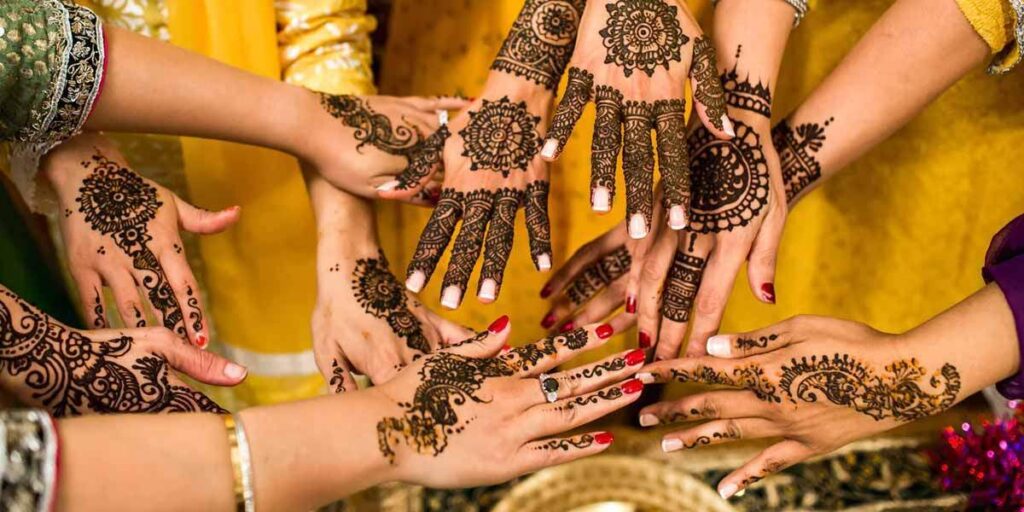
The Mehendi ceremony is a colorful and joyous occasion where intricate henna designs are applied to the bride’s hands and feet. These designs often include the groom’s initials, symbolizing love and togetherness.
Sangeet Night
Sangeet is an evening filled with music, dance, and performances by family members and friends. It’s a time for both families to celebrate together and showcase their talents, creating a memorable prelude to the wedding day.
Wedding Attire
In Indian wedding traditions, wedding attire holds immense cultural significance, reflecting the rich diversity and heritage of the country. Traditional attire varies widely based on region, but generally, brides often adorn themselves in vibrant and intricately embroidered saris or lehengas, adorned with exquisite jewelry and accessories like maang tikka and bangles. Grooms typically wear elaborately designed sherwanis or dhoti kurtas paired with embroidered turbans or pagdis. The colors and designs of the attire often symbolize elements such as prosperity, purity, and fertility, adding a deeper layer of meaning to the celebration of love and union.
Traditional Bridal Wear
Brides typically wear ornate sarees or lehengas, adorned with heavy embroidery and jewelry. Red is the traditional color for bridal wear in many parts of India, symbolizing prosperity and marital bliss.
Groom’s Attire
Grooms usually wear sherwanis or traditional suits, complemented with turbans and sometimes a ceremonial sword. The groom’s attire is equally elaborate, reflecting his status and readiness for marriage.
Regional Attire Differences
Each region has its unique bridal and groom attire. For instance, in South India, brides often wear Kanjeevaram sarees, while in the North, lehengas are more common. These regional variations add to the diversity of Indian weddings.
Wedding Day Rituals
In Indian wedding traditions, the wedding day is a tapestry of vibrant rituals deeply rooted in cultural heritage. The day begins with the ceremonial application of haldi, a paste made from turmeric, sandalwood, and rosewater, believed to purify and beautify the couple. As the day unfolds, the bride adorns her hands with intricate mehendi designs, symbolizing joy, beauty, and spiritual awakening. Amidst chants and prayers, the sacred vows are exchanged under a canopy adorned with flowers, signifying the union of two souls. The groom ties the auspicious mangalsutra around the bride’s neck, symbolizing their eternal bond, while the exchange of garlands marks their acceptance of each other. Finally, amidst joyful celebrations and blessings from family and friends, the newlyweds embark on their journey together, united by love, tradition, and the promise of a shared future.
Baraat (Groom’s Procession)
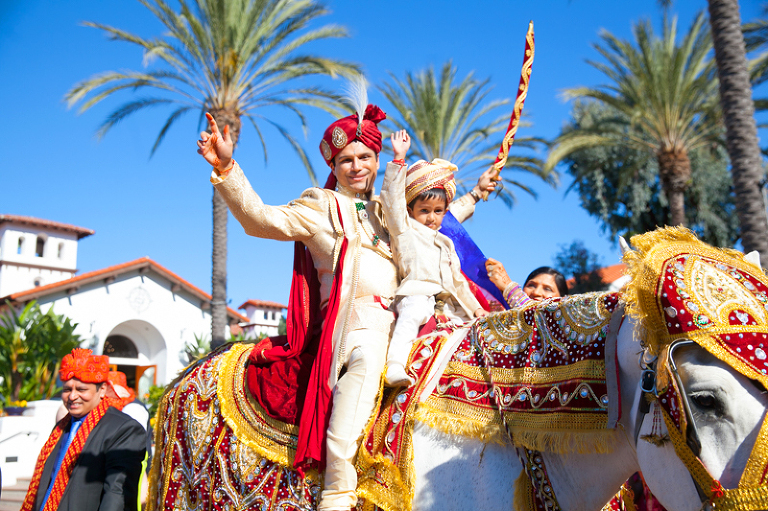
The Baraat is a lively procession where the groom rides a horse or arrives in a decorated car, accompanied by dancing and music. This joyous parade is a significant part of the wedding festivities.
Varmala (Garland Exchange)
The Varmala ceremony involves the bride and groom exchanging flower garlands, signifying their acceptance of each other as partners. This ritual is often accompanied by playful teasing and cheering from the guests.
Ceremonial Practices
Ceremonial practices in Indian wedding traditions are rich with cultural significance and symbolic rituals that vary across regions and communities. From the vibrant colors of attire to intricate rituals spanning days, Indian weddings are a celebration of tradition, family, and love. Common ceremonies include the exchange of garlands symbolizing acceptance and mutual respect, the sacred fire ceremony (agni), signifying the couple’s commitment and purification, and the application of turmeric paste (haldi) for blessings and protection. Each ritual holds deep-rooted meaning, fostering unity, prosperity, and the merging of families. The diversity and depth of these ceremonial practices reflect the complexity and beauty of India’s cultural tapestry.
Kanyadaan
Kanyadaan is the emotional moment when the bride’s father gives her away to the groom, entrusting her care to him. This act symbolizes the union of the two families.
Saat Phere (Seven Vows)
The couple takes seven vows, or pheras, around a sacred fire, each vow representing a promise to each other. These vows cover aspects like companionship, mutual respect, and lifelong commitment.
Sindoor and Mangalsutra
The groom applies sindoor (vermilion) to the bride’s forehead and ties a mangalsutra (sacred necklace) around her neck, symbolizing her new status as a married woman.
Post-Wedding Rituals
In Indian wedding traditions, post-wedding rituals hold immense significance, marking the beginning of a new journey for the newlyweds. One common ritual is the ‘Griha Pravesh,’ where the bride is welcomed into her new home by the groom’s family. This is followed by ‘Mooh Dikhai,’ where the bride’s face is unveiled to the groom’s family, symbolizing her acceptance into the household. ‘Aashirvad’ is another important custom where the elders bless the couple for a prosperous married life. Finally, the ‘Vidaai’ ceremony concludes the festivities as the bride bids an emotional farewell to her family, signifying her transition to her husband’s home. These rituals not only uphold cultural traditions but also reinforce the bonds between families and bless the couple for a harmonious life ahead.
Vidaai (Farewell)

The Vidaai is a poignant ritual where the bride bids farewell to her family and leaves for her new home. It’s an emotional moment, symbolizing the bride’s transition from her parental home to her marital home.
Girah Parvesh (Homecoming)
Upon arriving at the groom’s house, the bride is welcomed with an aarti and enters her new home by kicking a pot of rice, symbolizing prosperity and good fortune.
Unique Regional Traditions
Indian wedding traditions are a vibrant tapestry of unique regional customs, reflecting the rich cultural diversity across the subcontinent. From the intricate Mehendi designs adorning the hands of brides in North India to the vibrant Kolam patterns decorating the entrances of South Indian homes, each region brings its own flair to the celebration. In the East, the sound of the dhak drum resonates through the air as part of the joyous procession, while in the West, the raucous dance of the dhol and garba marks the exuberant festivities. Whether it’s the sacred saat phere of the North or the graceful exchange of garlands in the South, these distinct traditions unite families and communities in the colorful tapestry of Indian weddings.
Bengali Weddings
Bengali weddings feature rituals like Shubho Drishti, where the couple first sees each other in the wedding attire through a mirror, and the Saat Paak, where the bride is carried around the groom seven times.
South Indian Weddings
In South Indian weddings, rituals like Kashi Yatra, where the groom pretends to leave for a pilgrimage and is coaxed back by the bride’s family, add a touch of humor and tradition.
Modern Adaptations
Modern adaptations in Indian wedding traditions reflect a blend of cultural heritage and contemporary trends, embracing technological advancements and evolving societal norms. From personalized digital invitations replacing traditional paper cards to the incorporation of eco-friendly practices in décor and attire choices, modern Indian weddings reflect a conscious effort towards sustainability and innovation. Additionally, couples are redefining gender roles through egalitarian rituals, such as jointly performing traditional ceremonies and sharing responsibilities. Furthermore, the rise of destination weddings offers a unique fusion of global influences with Indian customs, creating memorable experiences that celebrate diversity while honoring age-old traditions.
Blend of Traditional and Contemporary Practices
Many couples incorporate modern elements like destination weddings, themed decor, and digital invitations while still adhering to traditional customs.
Influence of Globalization
Globalization has brought in influences from Western cultures, seen in the adoption of white wedding gowns, wedding planners, and elaborate receptions.
The Role of Food in Indian Weddings
Food holds a central place in Indian weddings, transcending mere sustenance to become a cornerstone of celebration and tradition. From vibrant street snacks to lavish banquet spreads, the culinary journey mirrors the diverse cultural tapestry of India itself. Each region boasts its signature delicacies, from the aromatic biryanis of Hyderabad to the rich gravies of Punjab. Moreover, food acts as a conduit for familial bonding and hospitality, with elaborate feasts symbolizing abundance and prosperity. The intricate planning and attention to detail in menu selection underscore the significance of culinary traditions in uniting families and communities during this auspicious occasion.
Traditional Wedding Feasts
Indian weddings are known for their lavish feasts, featuring a variety of dishes from different regions. The food is often a mix of traditional recipes handed down through generations.
Regional Culinary Specialties
Each region has its culinary specialties that are showcased during weddings. For example, North Indian weddings might feature rich curries and tandoori dishes, while South Indian weddings may offer a variety of rice-based dishes and dosas.
Music and Dance
In Indian weddings, music and dance play a vital role, infusing the celebrations with vibrant energy and cultural richness. From the rhythmic beats of traditional instruments like the dhol and tabla to the graceful movements of classical dance forms like Bharatanatyam and Kathak, every moment is punctuated with joyous melodies and intricate choreography. Guests join in the festivities, often forming impromptu dance circles, while professional performers dazzle with their skill and flair. Whether it’s the lively sangeet ceremony or the exuberant baraati procession, music and dance serve as the heartbeat of Indian weddings, creating unforgettable memories that resonate long after the festivities have ended.
Traditional Music Forms
Traditional music forms like Shehnai, Dhol, and classical ragas are often played during various ceremonies, enhancing the cultural ambiance.
Popular Dance Styles
From classical dances like Bharatanatyam and Kathak to contemporary Bollywood numbers, dance forms an essential part of the celebrations, bringing everyone together in joyous movement.
Wedding Decor and Themes
In Indian weddings, the decor and themes play a pivotal role, reflecting the richness of tradition and cultural heritage. Vibrant colors, intricate designs, and opulent embellishments characterize the decor, creating a mesmerizing ambiance that symbolizes the union of two souls. From majestic mandaps adorned with flowers to elaborate entrance gates exuding grandeur, every element is meticulously crafted to evoke a sense of celebration and festivity. Whether it’s the timeless elegance of a traditional theme or the contemporary charm of a fusion concept, Indian weddings embrace diversity, offering a kaleidoscope of choices to suit every couple’s taste and style, ensuring that their special day is an unforgettable journey into love and togetherness.
Traditional vs. Modern Decor
Traditional decor might include marigold garlands, diyas (lamps), and intricate rangoli designs, while modern decor could feature elaborate floral arrangements, fairy lights, and themed setups.
Popular Wedding Themes
Themes like royal weddings, beach weddings, and vintage weddings are gaining popularity, allowing couples to personalize their celebrations.
The Role of Family and Community
Indian weddings are not just about two individuals tying the knot; they are a celebration that involves the whole family and community. Families play a central role in every aspect of the wedding, from planning and organizing to participating in various rituals and ceremonies. The extended family often comes together to lend support and contribute to the festivities, creating a sense of unity and bonding. Additionally, communities play a vital role, providing assistance, blessings, and sharing in the joy of the union. From elaborate rituals to vibrant festivities, Indian weddings are a reflection of the close-knit relationships and strong bonds within families and communities.
Importance of Family Involvement
Weddings in India are family affairs, with relatives taking on various responsibilities to ensure everything runs smoothly. The involvement of family members in rituals and preparations adds to the warmth and richness of the celebration.
Community Support and Participation
The community also plays a crucial role, from participating in the ceremonies to helping with the logistics. This collective effort strengthens social bonds and fosters a sense of unity.
Conclusion
In conclusion, exploring the lesser-known Indian wedding customs reveals a tapestry of tradition, symbolism, and cultural richness that often goes unnoticed amidst the grandeur of the ceremonies. From the intricate rituals like Kashi Yatra and Kanyadaan to the playful yet profound games like Joota Chupai, these customs not only bind families together but also serve as a bridge between generations, preserving heritage and fostering a sense of belonging. Through understanding and appreciation of these traditions, one can truly grasp the depth and diversity of Indian culture, recognizing the significance of every gesture and vow exchanged in the sacred bond of marriage.


